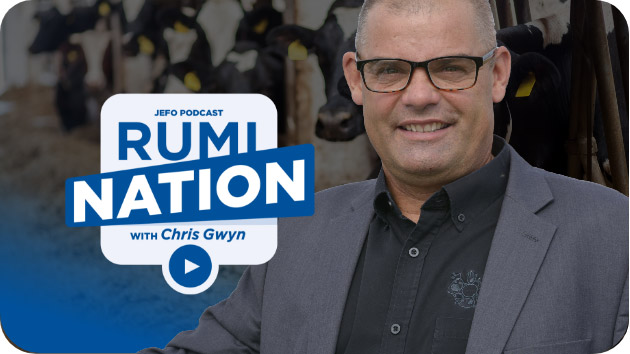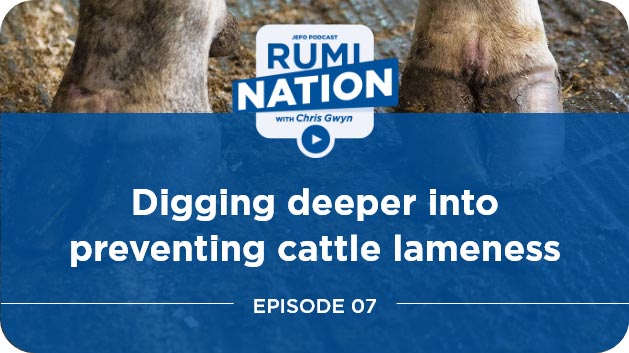Did you enjoy this episode?
Share now!
Investigating Rumen Acidosis
We thought that with our high forage diets, subacute rumen acidosis (SARA) was a thing of the past. The ability of individual cows to cope with variable rumen pH differs, yet the early lactation cow is often a risk. Dr. Gregory Penner digs deeper into this subject.
Our guest - Dr. Gregory Penner
Professor in the University of Saskatchewan and U of S Centennial Enhancement Chair in Ruminant Nutritional Physiology.
Research projects
- Ruminant nutritional physiology
- Cattle nutrition to enhance health and productivity
- Gut function

Contact
Join the Rumination community
Timestamps & Summary
00:45:00 – What first drew you into the area of study of ruminant nutritional physiology?
Dr. Penner explains that when he started his master, he was really interested in transition cows, and the more he read about rumen acidosis the more he started to realize that the gut played a key regulatory role. He got really excited and focused his PhD in that area and hasn’t looked back since.
01:29:00 – How does acidosis today differ from acidosis we used to talk about?
Dr. Penner says that it’s not the grain overload condition that we used to think it was. What we’re trying to do is to deliver high energy diets so the microbes can grow quite fast and produce a lot of volatile fatty acids and short chain fatty acids, which then become energy for the host. It also drives the microbial protein synthesis and hopefully increases the metabolizable protein supply.
What we have now is not a grain overload situation, but a situation where we’re feeding very fermentable diets of which nature challenge the ability of cows to regulate their pH.
02:31:00 – And we should also take into account dry matter intake, which I think talks a lot about the transition cow as well. Can you expand a bit on that?
Some cows with low pH are still able to maintain quite a high intake. For those cows, Dr. Penner would argue that pH is not a problem. Other cows have low pH and relatively low intake, so they think that low pH might be imposing a challenge to them. We need to understand what’s happening for the pH coupled with dry matter intake.
In some studies, cows were given a limited amount of food and their pH went up. If they just had a narrow view of ruminant pH, they would say those cows had a great healthy room in fermentation profile when in reality they were essentially starved for nutrients because of low dry intake. The other thing they learned was that we need to get away from the concept of low pH is bad and high pH is good.
They now focus more on the impact of low pH.
4:38:00 – Can we expand on that impact?
Dr. Penner said that it goes back to the variable feed intake, as we typically drop it by about 30% for the transition cows. The most common and prominent factor of this reduction is that they get sick. As these cows are already at risk with other transition disorders, they started focusing more on what they can do to help those cows after they went through a period of low feed intake.
6:38:00 – What would be the take-home message for dairy producers and nutritionists?
It comes back to understanding and monitoring feed intake, and trying to encourage housing and management systems that give cows access to fresh, highly palatable feed. It also includes monitoring those cows to evaluate whether they have an appropriate intake or not.
We need people with good cow sense, even if with the help of technology.
Need more information?









